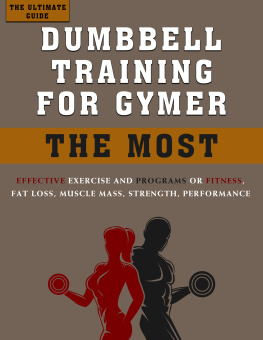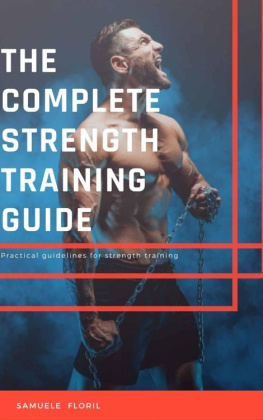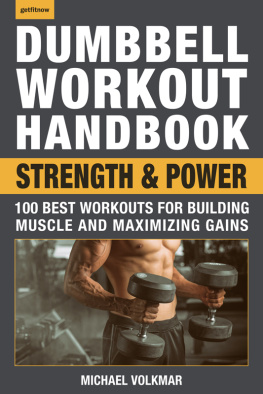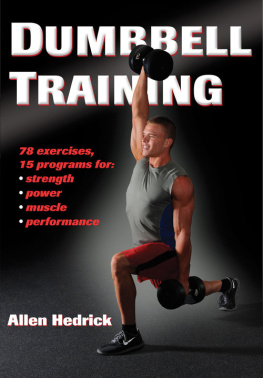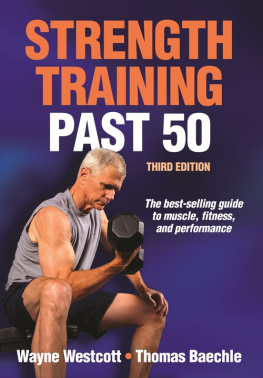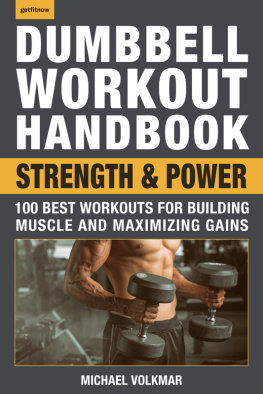Copyright 2014 Hatfield Research & Development Corp., JoshStrength, LLC. All rights reserved. No part of this information may be reproduced or utilized in any form or by any means, electronic or mechanical, including photocopying, recording, distributing, emailing, posting on forums or by any information storage or retrieval system, without permission in writing from both the authors.
ISBN: 9781483539614
Disclaimer
This book is informational only. The information is not intended for use in connection with the sale of any product. Any claims or presentations regarding any specific products or brand names are strictly the responsibility of the product owners or manufacturers. This summary of information from unpublished sources, books, research journals and articles is not intended to replace the advice or attention of health care professionals. It is not intended to direct their behavior or replace their independent professional judgment. If you have a problem with your health, or before you embark on any health, fitness or sports training programs, seek clearance from a qualified health care professional.
Cover Model: Gary Strydom is a South African/Afrikaner and an accomplished IFBB professional bodybuilder whose career spans three decades. At 54 years old, Gary made a comeback in 2006, setting the world abuzz with his dynamic new look proving that the sport of bodybuilding is ageless. Read more about Garys amazing bodybuilding career at:
http://garystrydom.com/index.php/about-gary-strydom/
Table of Contents
Chapter I: History
Brief History
It would be nice to say this is the first book written on dumbbell training, but we were beaten to the punch by nearly 1800 years!
In 200 A.D., Galen, a Greek physician, wrote a text detailing the virtues of dumbbell training and the potential healing power of training with dumbbells. The book was called De Sanitate Tuenda. De Sanitate Tuenda served as the proverbial dumbbell Bible for the next 1,500 years! Over the last few decades, free weight training has gained acceptance among medical professionals and the masses as a way for women to improve their health and aesthetics. Roman women gained these benefits nearly two millenniums ago. Recently, a mosaic dating back to the second century A.D. was discovered depicting a Roman woman training with a somewhat contemporary-looking dumbbell.

In 1569, physician Hieronymus Mercurialis wrote De Arte Gymnastica Aput Ancientes, a compilation of theories on medicine and exercise. Mercurialis advocated exercising with halteres levels in the pectoralis major and anterior deltoids an(dumbbells) and heavy sand-filled bags.
Name Origin
The word dumbbell originated in England in the late 1600s, during the Stuart Period. Initially, this referred to a piece of equipment simulating the action of a bell rope for developing technique and especially strength for the purpose of practicing English bell ringing, but without making a noise (hence dumb). As strongmen started to make their own equipment, they kept the name, even though the shape and form changed.
On the other side of the pond, the great Benjamin Franklin, in letters to his son, wrote that, I live temperately, drink no wine, and use daily the exercise of the dumbbell. Thomas Jefferson trained with dumbbells to strengthen an injured wrist and quite possibly to deal with the stress of 9,999 missed attempts in developing the light bulb.
Oldie But Goodie For thousands of years, dumbbell training has benefited general health and helped construct the strongest and most muscular physiques of all-time. In the words of Strength Sensei Charles Poliquin, Everything old is new again, but sometimes those old things are still the best! We both wholeheartedly thank you for letting us be a part of your training journey. You will now have one more weapon in your arsenal with The Complete Guide to Dumbbell Training: A Scientific Approach.
Frederick C. Hatfield, Ph.D
Josh Bryant, MS
Chapter II: Intro to Dumbbell Training
You may think that everyone in the gym knows how to use dumbbells. The word itself seems to imply that even a dumbbell knows how to use them. And for the most part, thats true. However, after both growing up in the weight room, weve grown to know dumbbell training from a more eclectic vantage point.
Consider first that there are several different kinds of dumbbells, each having unique features. There are also literally hundreds of dumbbell exercises for practically every muscle in the body and joint or multi-joint movements in all planes. Some kick ass, and some are asinine! It is impossible to discuss all of the various dumbbell training methods and exercises in a single book, so well stick to the most valuable and effective ones, plus a few unique ones weve learned from decades of experience in the trenches. Some of them will surprise you. Explicit instructions, principles and philosophies are covered in this book. Our objective is to give you tools to design your own routines, but if you prefer to follow our listed routines, we have also included plenty of innovative, detailed programs.
Dumbbell Superiority

Pat Casey incline pressing 220-pound dumbbells
Contrary to the hogwash spewed at the local Curves or by the dwindling Arthur Jones nautilus theocracy, dumbbell training is the ultimate form of weight training! There is a plethora of reasons why we believe this, and theyre detailed in this book. Dumbbells reign superior to machines for many of the same reasons that barbells do.
The primary advantage dumbbells hold over machines are they allow synergistic (helping) and stabilizer muscles to come into play much more effectively than does machine training. Taking things a step further, this is also the major advantage that dumbbells have over barbells. Simply, stabilizers must act in all directions with dumbbells, whereas the barbell connects your two hands together, thereby offering a measure of greater stability.
Science Agrees
In one study, muscle activity in the free weight barbell bench press, Smith machine bench press and dumbbell bench press were measured and contrasted. The study was conducted on 12 healthy, resistance-trained young men. Researchers recorded one-repetition max and electromyographic (EMG) activity of the pectoralis major, deltoid anterior, biceps, and triceps brachii during the movements. EMG activity in the pectoralis major and anterior deltoid was similar during all three lifts. But as stability requirements increased, electrical activity in the biceps increased.
In other words, the Smith machine had the lowest activation of the biceps and the dumbbell bench press had the highest activation of the biceps because of stabilizing the load. The study concluded that high-stability requirements in the dumbbell bench press resulted in similar EMG levels in the pectoralis major and anterior deltoids and higher biceps activation.
Saeterbakken, A. H., Van Den Tillaar, R., & Fimland, M. S. (2011). A comparison of muscle activity and 1-RM strength of three chest-press exercises with different stability requirements. Journal of Sports Sciences, 29(5), 533-538.
Science and anecdotes both agree dumbbells have the greatest stability requirements.
Chapter III: Design Variation
Variations in Dumbbell Design
Lets identify some of the types of dumbbells that have found their way to market and then list a few unique exercises that have been done since the days when dumbbells were reintroduced into the modern era of fitness training.
Next page

